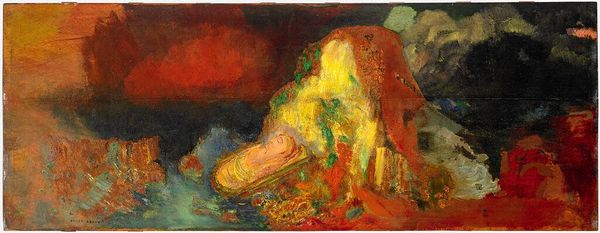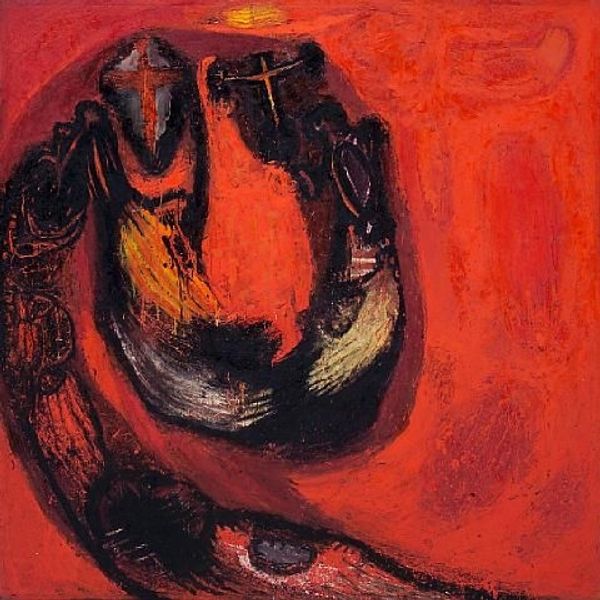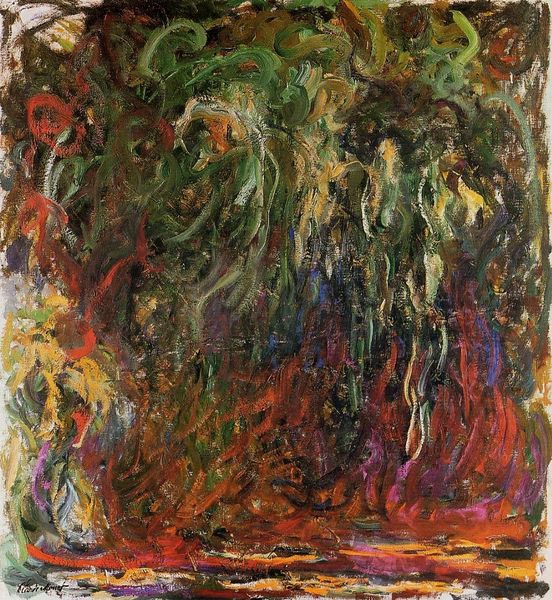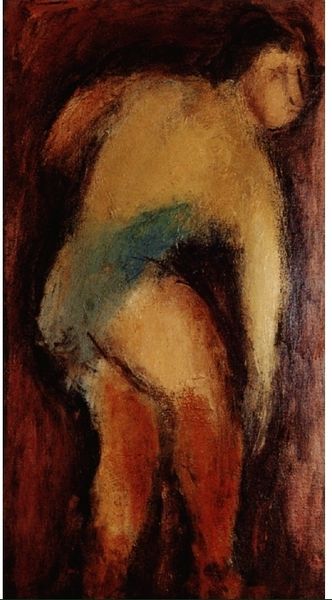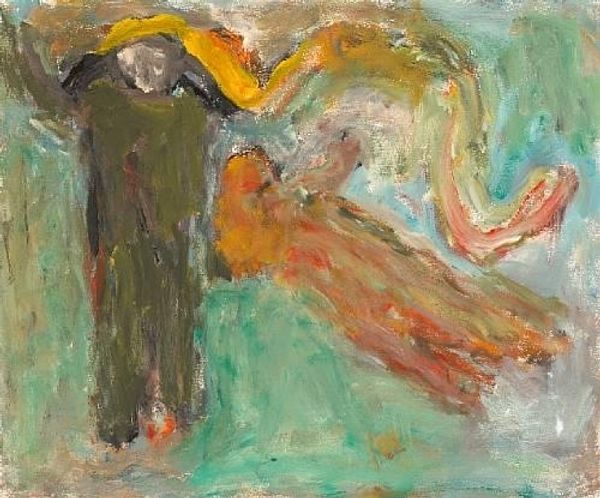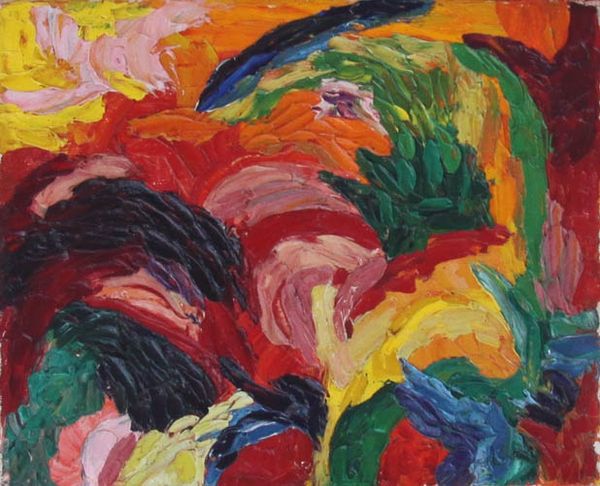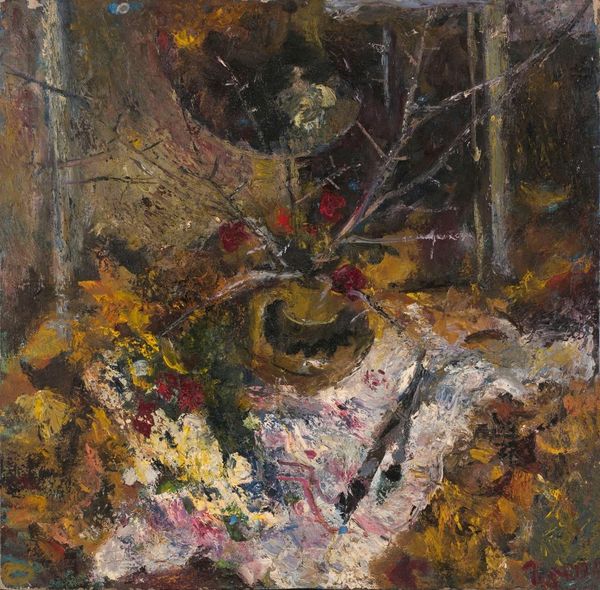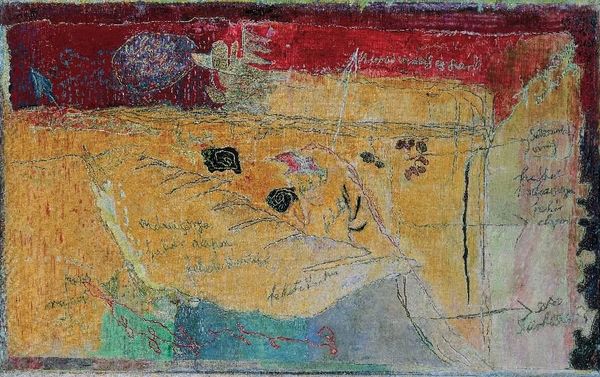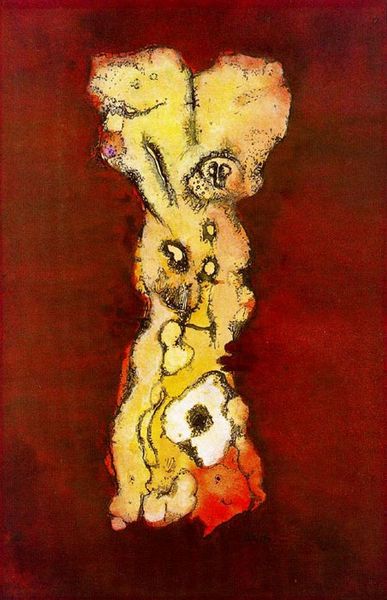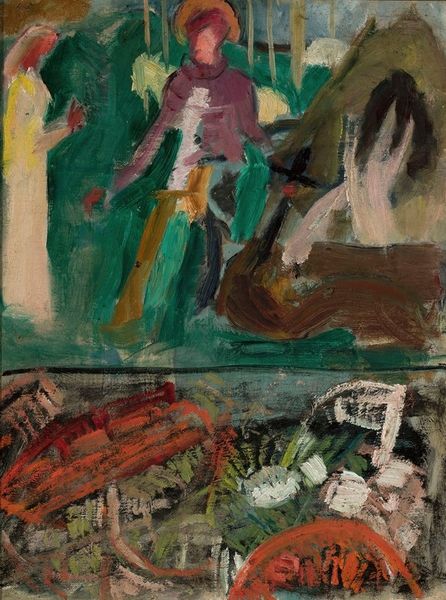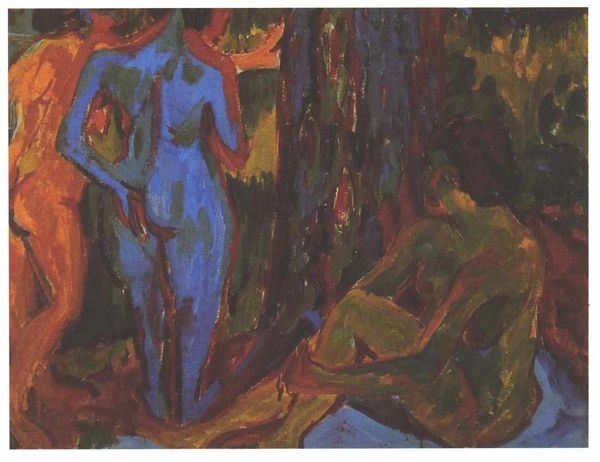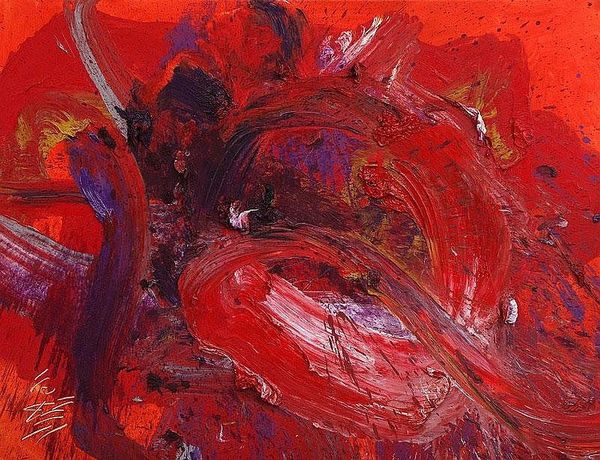
tempera, painting, oil-paint
#
allegories
#
narrative-art
#
tempera
#
symbol
#
painting
#
oil-paint
#
landscape
#
figuration
#
possibly oil pastel
#
jesus-christ
#
christianity
#
symbolism
#
history-painting
#
christ
Copyright: Public domain
Curator: Let’s turn our attention to Odilon Redon’s “Onnes (Christ and the Serpent),” painted in 1907. What’s your immediate take? Editor: Visceral. The reds hit you first, then the almost suffocating darkness of the central figure’s face. It's biblical, but unsettling, like a nightmare rendition of redemption. Curator: Precisely. Redon masterfully uses tempera and oil to depict this allegorical scene, part of a series for the Baron d’Onnes. Observe the serpent; its coiling form dominates the foreground. Semiotically, it signifies temptation, a counterpoint to the looming figure of Christ. Editor: The serpent feels… hopeful, ironically. That vibrant green against the oppressive red is strangely optimistic. Christ, shrouded and somber, is almost secondary. Do you think Redon was playing with traditional iconography? Curator: Undoubtedly. He inverts the expected visual hierarchy, doesn’t he? Traditional Christian art usually presents Christ triumphant, but here, we see a subdued, almost passive figure. The color choices enhance this; the redness is passion, yes, but also perhaps violence, sacrifice…suffering. Editor: And the serpent? Green often signifies life, rebirth. Maybe Redon saw the duality, the necessary interplay of opposing forces? Good can’t exist without evil, and all that jazz. The brushstrokes are thick, almost hurried, contributing to the emotional tension. Curator: Good point, the materiality of the oil-paint lends a sense of urgency. But the structural composition also leads our eye; from the serpent’s head up to the shrouded figure. The juxtaposition is key. Consider the landscape, how the subdued greens are relegated to the top, as if hope lies on the far horizon. Editor: I see it. He’s trapped the divine, literally, hemmed it in. It speaks to the inner struggles, the agonizing choice between sin and salvation, maybe even questioning faith. Very human, really. Curator: It is. And a radical departure from conventional religious depictions, favoring ambiguity over didacticism. Editor: It’s a bold and brilliantly subversive, asking more than it answers. And isn't that what great art should do? Curator: Precisely. Redon gives us a moment pregnant with symbolic possibilities rather than resolution. Food for thought.
Comments
No comments
Be the first to comment and join the conversation on the ultimate creative platform.
